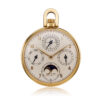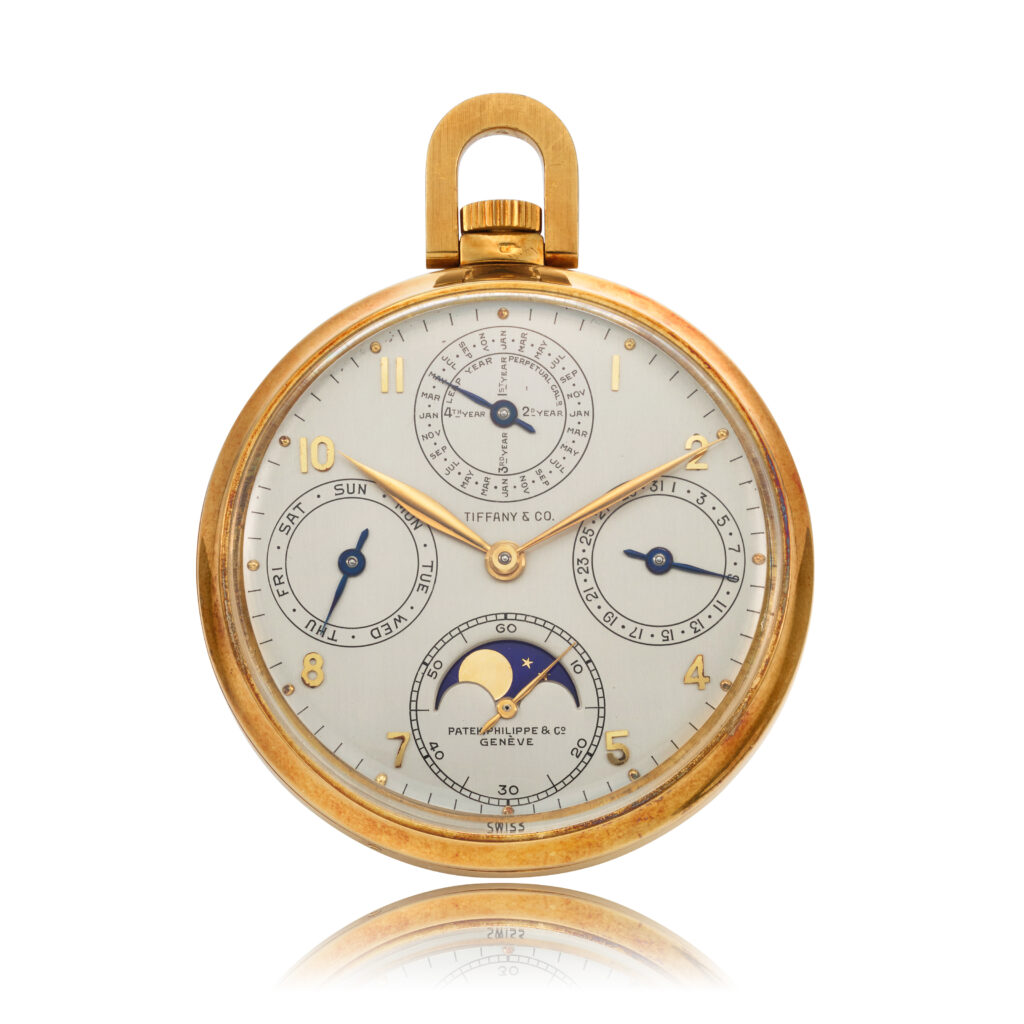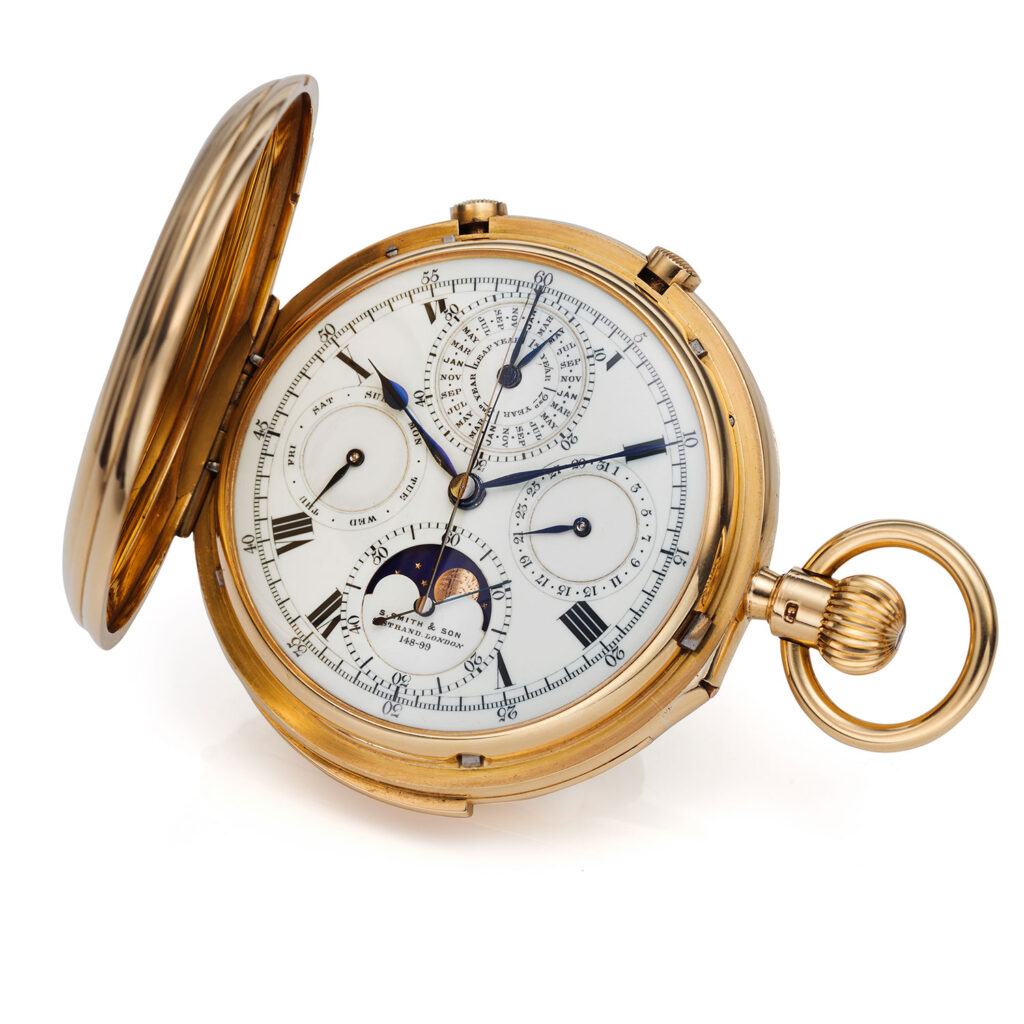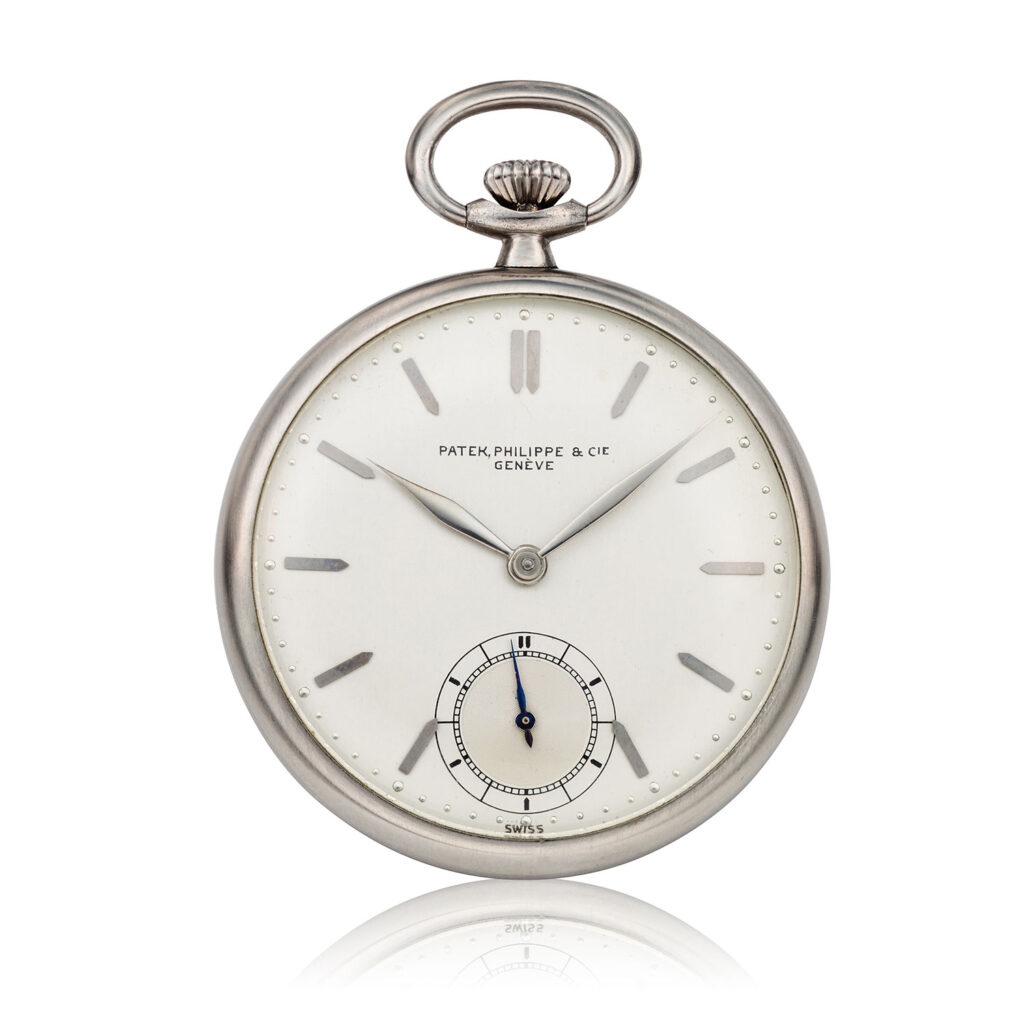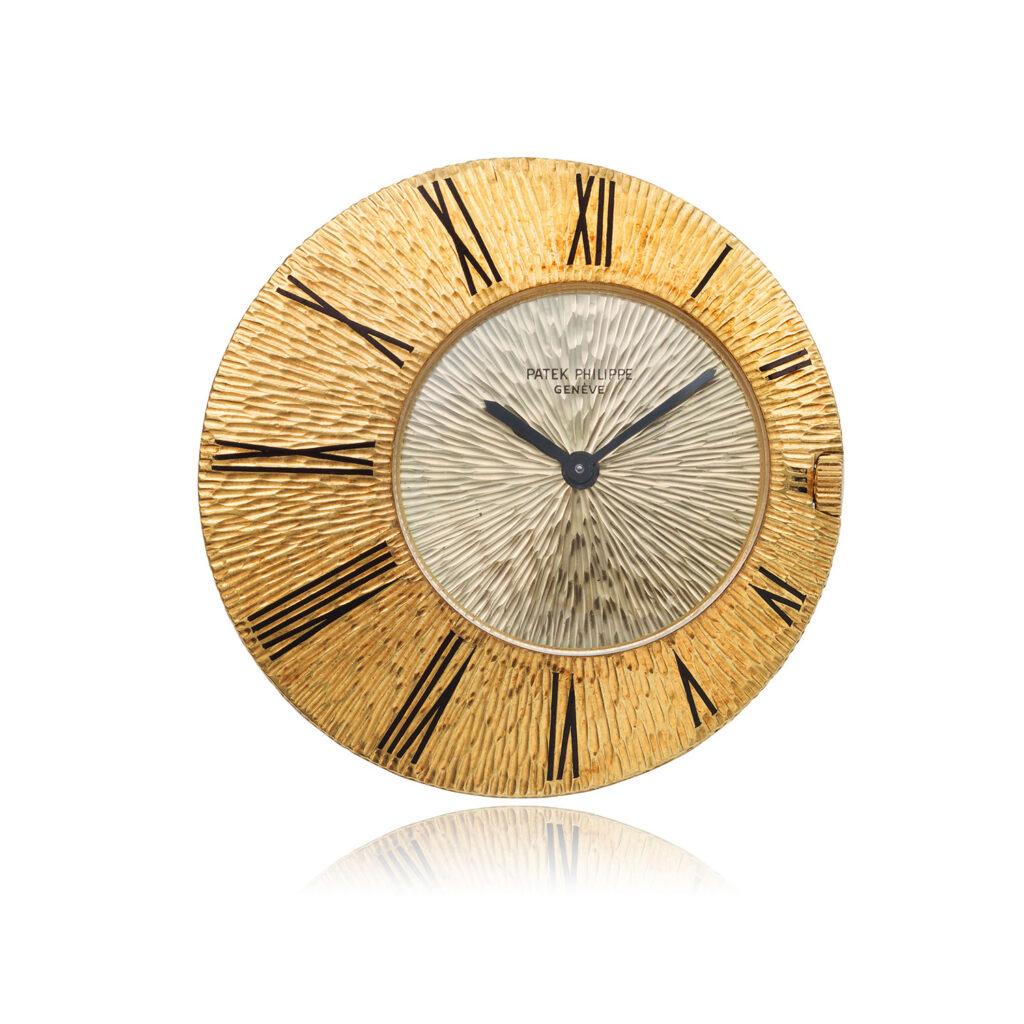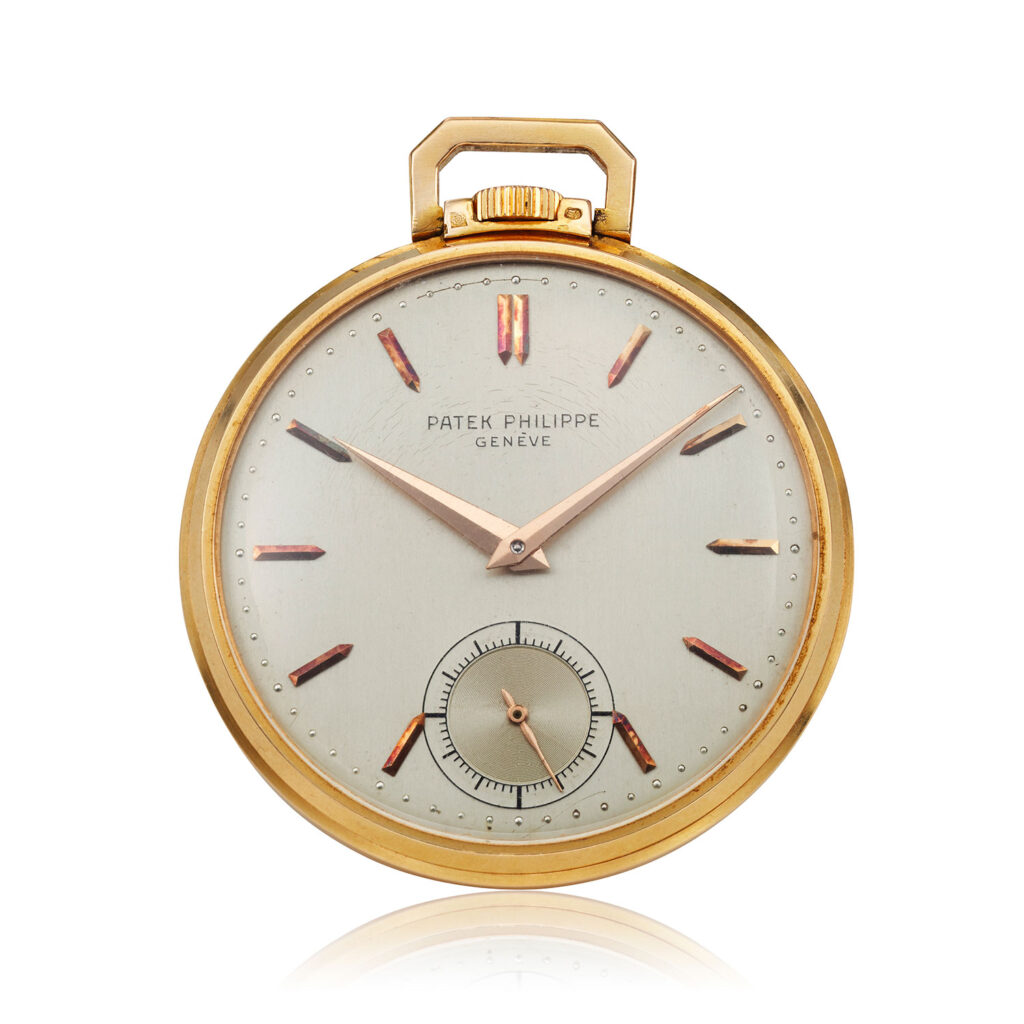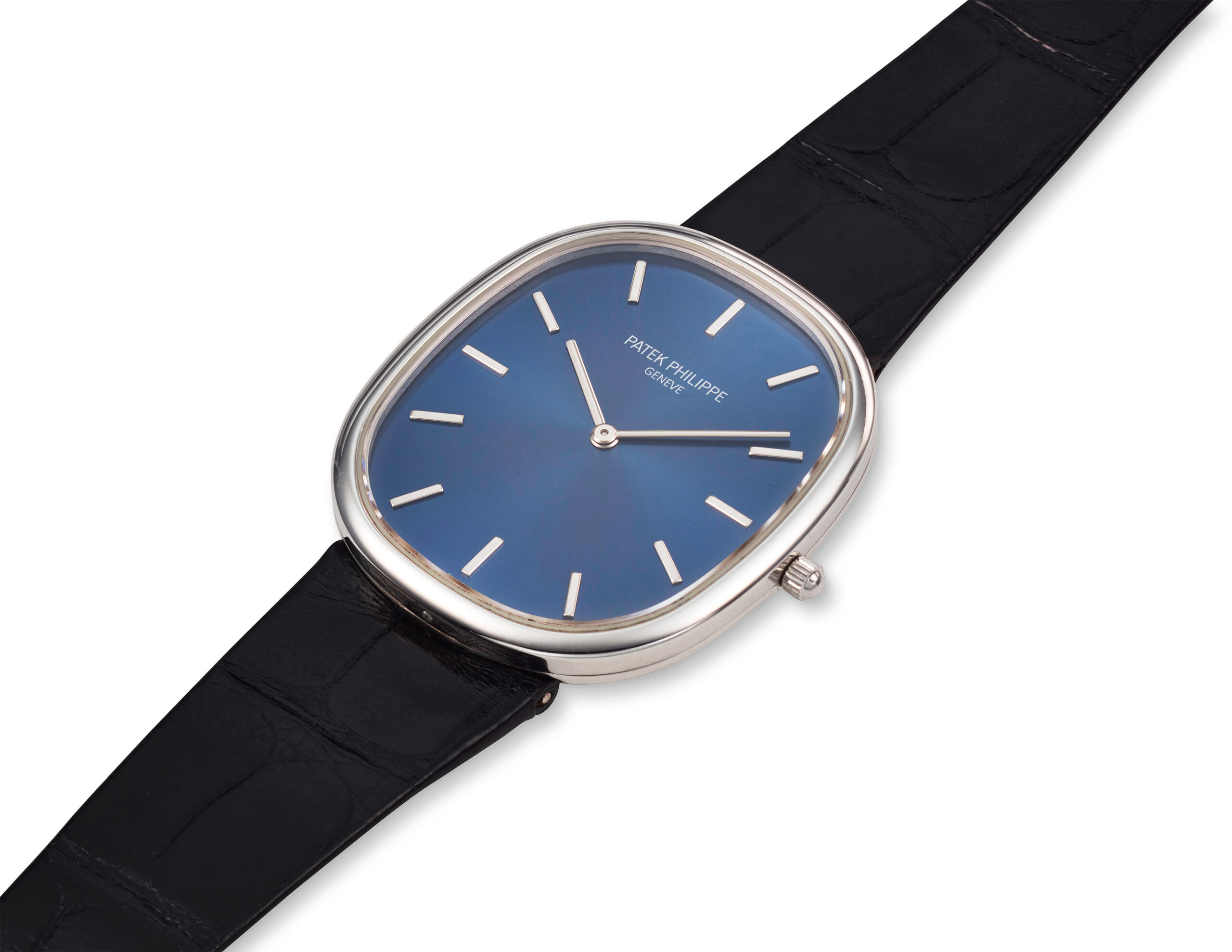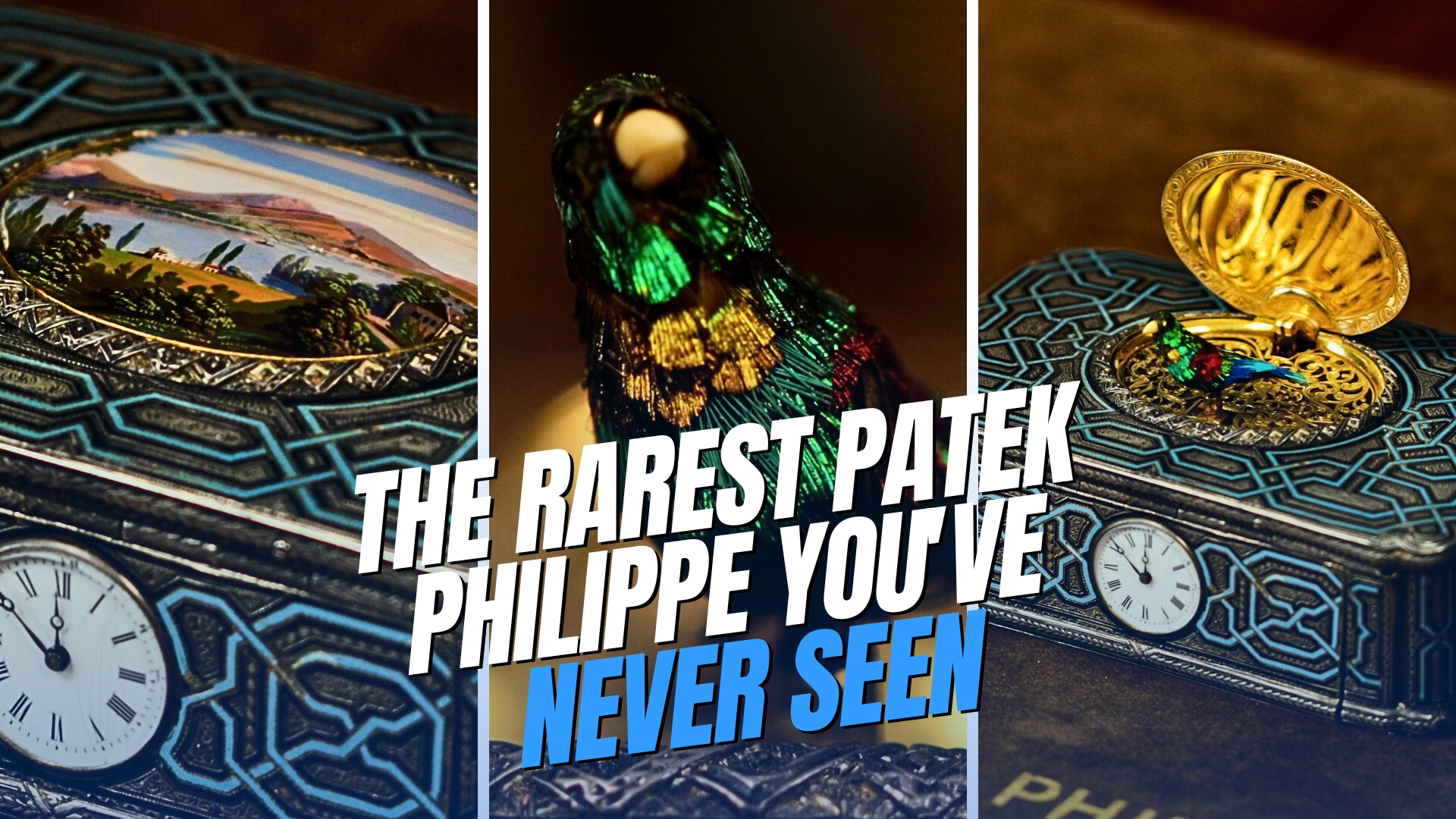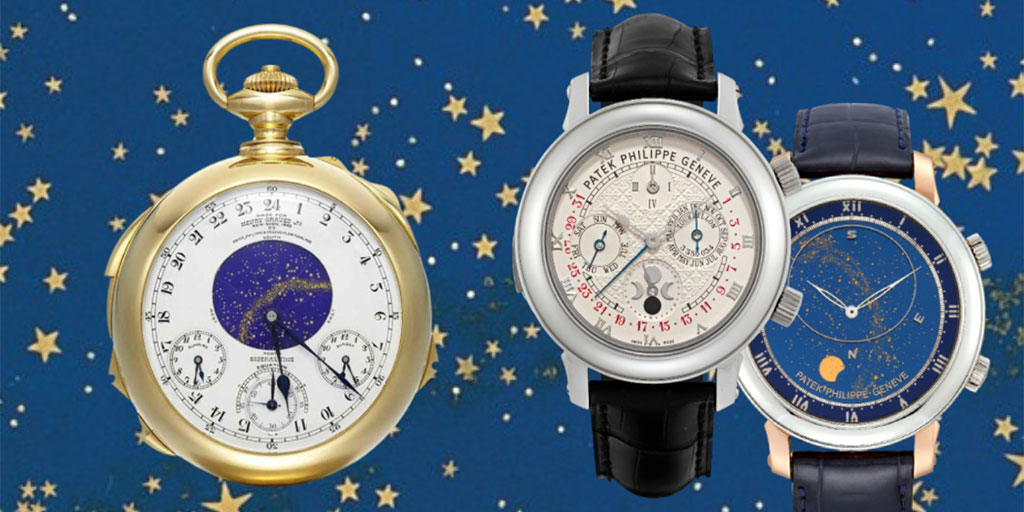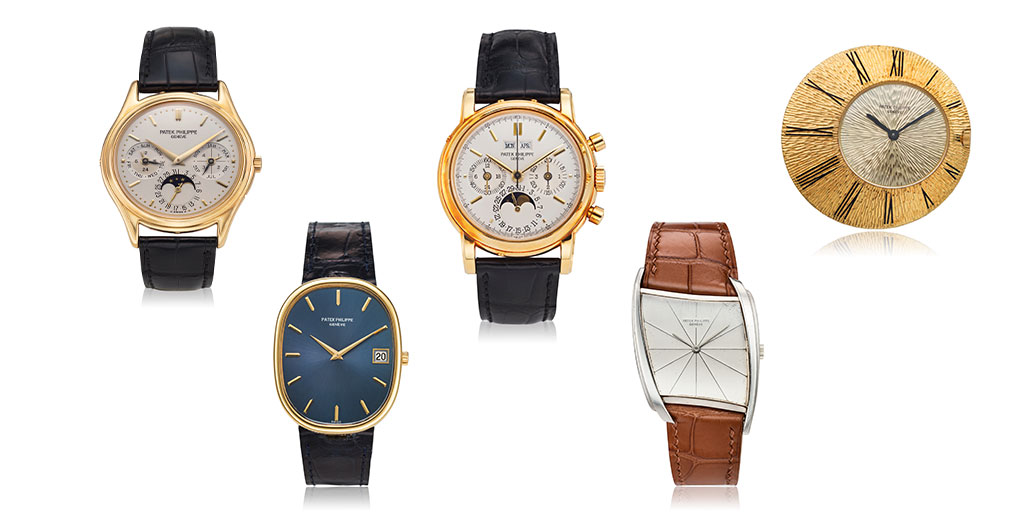The ref. 725 perpetual calendar is where it all began – the entire lineage of the references 1518, 2499, 3970, 5970, 5270 can be traced back to the dial design of this model. The DNA of the ref. 725 can be seen in the position of the moonphase and subsidiary dials on numerous Patek Philippe calendars made throughout the second half of the 20th century and beyond. But as well as the aesthetics, it is the quality of the ref. 725 that makes it the very essence of all things Patek Philippe.
The ref. 725 was made with a caliber 17-170 perpetual calendar by Victorin Piguet & Cie. The ref. 725 is a true instantaneous perpetual calendar with the date at 3 o’clock, the day of the week at 9 o’clock, the month at 12 o’clock, and moon phases with aperture at 6 o’clock. The movement is adjusted to 8 positions and the quality of movement finish is second to none.
Dials for the ref. 725 were made by Stern Frères, typically silvered with applied gold indexes; some were made with feuille hands and others with dauphine hands. The final examples of the ref. 725, made mostly in the 1970s (known as ref. 725/4), had a linear perpetual calendar, otherwise known as the ‘American straight line calendar’ (which refers to a single aperture opening that shows the month/date/day). The bookends of the ref. 725 echo the differences in layout between a ref. 1518 and ref. 3448.
The cases were made by Wenger, who also made the cases for the later series, the ref. 2499. The ref. 725 was 46 mm in diameter and 10 mm thick, the ideal size for a dress watch. It was set with three push pieces: the day and date set with a pusher at 9 o’clock, the moon phase set at 7 o’clock, and the day only at 3 o’clock.
Fewer than 100 ref. 725s were made in all configurations and fewer than 21 are known to have been in yellow gold. Five examples of the reference are now part of the Patek Philippe Museum, a testament to the importance of this watch to the Patek Philippe lineage.
This fresh to market example features a Spanish calendar, a variant only seen once before at the Patek Philippe Museum. The dial, case and movement are all exceptionally preserved and the watch has been recently overhauled and ready to be added to your collection.


